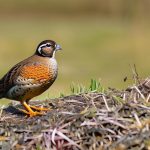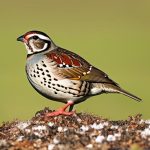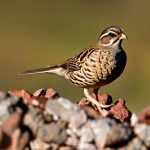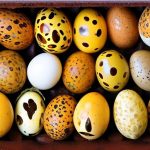When it comes to choosing the right outdoor enclosure for your animals, there are several factors to consider. First and foremost, you need to take into account the size and type of animal you are housing. Different animals have different space requirements and environmental needs, so it’s important to do your research and choose an enclosure that will provide them with enough space to move around and exhibit natural behaviors.
Another important consideration is the material of the enclosure. For larger animals or those that are prone to digging or chewing, a sturdy material like metal or heavy-duty plastic may be necessary to prevent escape or damage to the enclosure. For smaller animals, a wire mesh or wooden enclosure may be suitable, as long as it is secure and provides adequate protection from predators.
Additionally, you’ll want to consider the location of the enclosure. It should be placed in an area that provides a balance of sunlight and shade, as well as protection from wind and extreme weather conditions. It’s also important to ensure that the enclosure is easily accessible for cleaning and maintenance, and that it is situated in a safe and secure area to prevent unauthorized access or tampering.
Key Takeaways
- Choose an outdoor enclosure that is appropriate for the specific needs and behaviors of the animals you are housing.
- Provide adequate shelter and protection from the elements, predators, and other potential hazards.
- Set up a suitable feeding and watering system that is easily accessible and meets the dietary and hydration needs of the animals.
- Ensure proper temperature and climate control within the enclosure to maintain a comfortable and healthy environment.
- Implement safety measures such as secure fencing, escape-proof enclosures, and predator deterrents to protect the animals from harm.
Providing Adequate Shelter and Protection
Once you have chosen the right outdoor enclosure, it’s important to provide adequate shelter and protection for your animals. This includes providing a secure and weatherproof shelter where they can seek refuge from extreme temperatures, inclement weather, and predators.
The shelter should be large enough to accommodate all of the animals comfortably, with enough space for them to move around and lie down. It should also be well-ventilated to ensure good air circulation, and insulated to provide warmth in colder weather. Additionally, the shelter should be raised off the ground to prevent flooding and provide a dry and comfortable environment for the animals.
In addition to a shelter, it’s important to provide protection from predators. This may include installing fencing or barriers around the enclosure to prevent access from larger animals, as well as securing the shelter with locks or latches to prevent unauthorized entry. It’s also important to regularly inspect the enclosure for any signs of damage or wear and tear, and make any necessary repairs or reinforcements to ensure the safety and security of the animals.
Creating a Suitable Feeding and Watering System
Creating a suitable feeding and watering system is essential for the health and well-being of your animals in an outdoor enclosure. The feeding system should be designed to provide easy access to food for all of the animals, while also preventing contamination and spoilage. This may include using feeders that are elevated off the ground to prevent soiling, or using automatic feeders that dispense food at regular intervals.
Similarly, the watering system should be designed to provide clean and fresh water at all times. This may include using automatic waterers that are connected to a clean water source, or providing water in containers that are regularly cleaned and refilled. It’s important to monitor the feeding and watering systems regularly to ensure that they are functioning properly and that the animals have access to an adequate supply of food and water.
In addition to providing food and water, it’s important to consider the nutritional needs of the animals and provide a balanced diet that meets their specific dietary requirements. This may include consulting with a veterinarian or animal nutritionist to develop a feeding plan that includes a variety of foods and supplements to ensure that the animals are receiving all of the nutrients they need for optimal health.
Ensuring Proper Temperature and Climate Control
Ensuring proper temperature and climate control is crucial when housing animals in an outdoor enclosure. Depending on the type of animal you are housing, you may need to provide heating or cooling systems to maintain a comfortable temperature year-round.
For animals that require warmth, such as reptiles or tropical birds, heating elements such as heat lamps or heating pads may be necessary to maintain a consistent temperature within the enclosure. It’s important to monitor the temperature regularly and make adjustments as needed to ensure that the animals are not exposed to extreme temperatures that could be harmful to their health.
Conversely, for animals that are sensitive to heat, such as rabbits or guinea pigs, providing shade and ventilation is essential to prevent overheating. This may include installing shade cloth or awnings over the enclosure, as well as providing fans or misting systems to help cool the air during hot weather.
In addition to temperature control, it’s important to consider other climate factors such as humidity and air quality. This may include providing proper ventilation to prevent moisture buildup and mold growth, as well as monitoring air quality to ensure that the animals are not exposed to harmful pollutants or allergens.
Implementing Safety Measures
Implementing safety measures is essential when housing animals in an outdoor enclosure to protect them from potential hazards and dangers. This may include installing fencing or barriers around the enclosure to prevent access from predators or unauthorized individuals, as well as securing the shelter with locks or latches to prevent escape or tampering.
It’s also important to regularly inspect the enclosure for any signs of damage or wear and tear, and make any necessary repairs or reinforcements to ensure that it remains secure and safe for the animals. This may include replacing worn-out fencing or repairing damaged shelter structures, as well as removing any potential hazards such as sharp objects or toxic plants from the enclosure.
In addition to physical safety measures, it’s important to consider other potential risks such as disease transmission or parasite infestations. This may include implementing a regular cleaning and disinfection schedule for the enclosure, as well as providing regular veterinary care and parasite prevention treatments for the animals.
Maintaining Cleanliness and Hygiene

Maintaining cleanliness and hygiene in an outdoor enclosure is essential for the health and well-being of the animals. This includes regularly cleaning and disinfecting the enclosure to prevent the buildup of waste and bacteria, as well as providing clean bedding materials and nesting areas for the animals.
It’s important to establish a regular cleaning schedule that includes removing soiled bedding, feces, and uneaten food from the enclosure, as well as scrubbing and disinfecting surfaces to prevent the spread of disease. This may include using animal-safe disinfectants and cleaning products, as well as ensuring that all cleaning materials are stored safely away from the animals.
In addition to regular cleaning, it’s important to provide adequate drainage in the enclosure to prevent standing water and moisture buildup, which can lead to mold growth and bacterial contamination. This may include installing drainage systems or using absorbent bedding materials that help wick away moisture from the enclosure.
Furthermore, maintaining hygiene also involves proper waste management. It’s important to dispose of waste properly and in accordance with local regulations, whether it’s through composting, recycling, or other appropriate methods. By maintaining cleanliness and hygiene in the outdoor enclosure, you can help prevent disease outbreaks and ensure a safe and healthy environment for your animals.
Monitoring and Observing Behavior and Health
Monitoring and observing behavior and health is crucial when housing animals in an outdoor enclosure. Regular observation allows you to detect any signs of illness or injury early on, so you can take appropriate action to address any health concerns promptly.
It’s important to establish a regular monitoring routine that includes observing the animals’ behavior, appetite, and activity levels on a daily basis. Any changes in behavior or appetite could be indicative of underlying health issues, so it’s important to take note of any unusual behaviors or symptoms and seek veterinary care if necessary.
In addition to behavioral observation, it’s important to conduct regular health checks on the animals to ensure that they are in good physical condition. This may include checking for signs of injury or illness, as well as monitoring their weight and body condition score to ensure that they are maintaining a healthy weight.
Furthermore, it’s important to keep detailed records of each animal’s health history, including vaccinations, deworming treatments, and any medical interventions they have received. This can help you track their health status over time and provide valuable information for veterinary care if needed.
By monitoring and observing behavior and health regularly, you can ensure that any potential health issues are addressed promptly, helping to maintain the overall well-being of the animals in your outdoor enclosure.
If you’re considering keeping button quail outdoors, you may also be interested in creating a safe and comfortable outdoor space for your birds. Poultry Wizard offers a helpful article on chicken coop run plans that can be adapted for button quail enclosures. Check out their chicken coop run plans to get inspired and learn more about creating a suitable outdoor habitat for your quail.
FAQs
What are button quail?
Button quail, also known as Chinese painted quail, are small ground-dwelling birds native to Southeast Asia and the Indian subcontinent. They are popular as pets due to their small size and colorful plumage.
Can button quail be kept outdoors?
Yes, button quail can be kept outdoors as long as they are provided with a suitable and secure enclosure. Outdoor enclosures should protect the quail from predators and provide them with shelter, food, and water.
What should be considered when keeping button quail outdoors?
When keeping button quail outdoors, it is important to consider the climate, predator protection, and the availability of food and water. The enclosure should also provide adequate space for the quail to move around and exhibit natural behaviors.
What type of enclosure is suitable for outdoor button quail?
A suitable outdoor enclosure for button quail should have a solid bottom to prevent predators from digging in, as well as a secure roof to protect the quail from aerial predators. The enclosure should also have areas for shelter, dust bathing, and foraging.
What do button quail eat when kept outdoors?
Button quail eat a variety of seeds, insects, and small plants. When kept outdoors, they can forage for insects and seeds in their enclosure, but supplemental food may also be provided to ensure they receive a balanced diet.
How can button quail be protected from predators when kept outdoors?
Button quail can be protected from predators when kept outdoors by using secure enclosures with solid bottoms and roofs. Additionally, the enclosure can be surrounded by a predator-proof barrier such as wire mesh or fencing buried into the ground to prevent digging.
Meet Walter, the feathered-friend fanatic of Florida! Nestled in the sunshine state, Walter struts through life with his feathered companions, clucking his way to happiness. With a coop that’s fancier than a five-star hotel, he’s the Don Juan of the chicken world. When he’s not teaching his hens to do the cha-cha, you’ll find him in a heated debate with his prized rooster, Sir Clucks-a-Lot. Walter’s poultry passion is no yolk; he’s the sunny-side-up guy you never knew you needed in your flock of friends!







